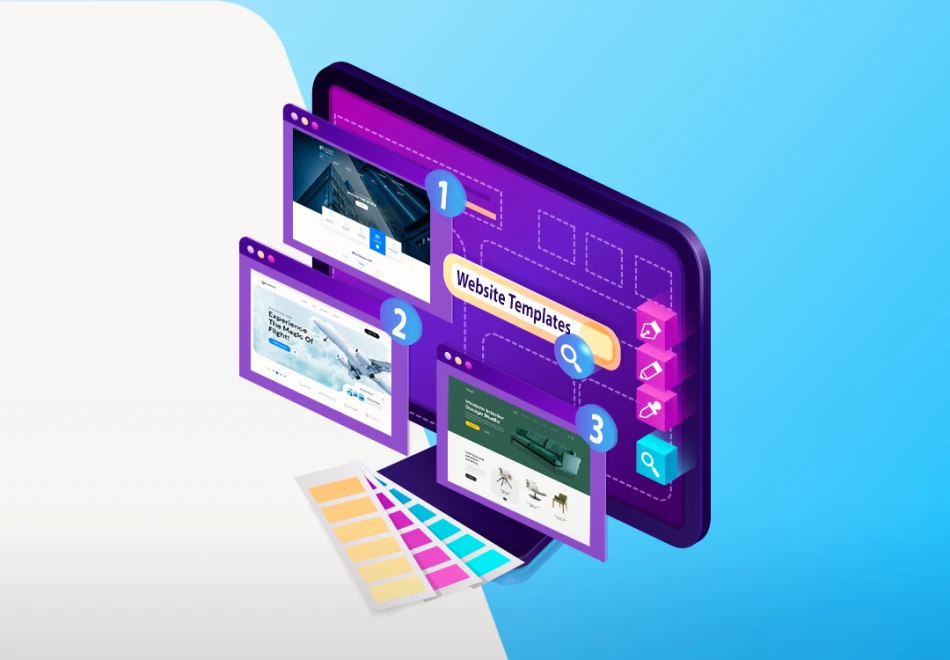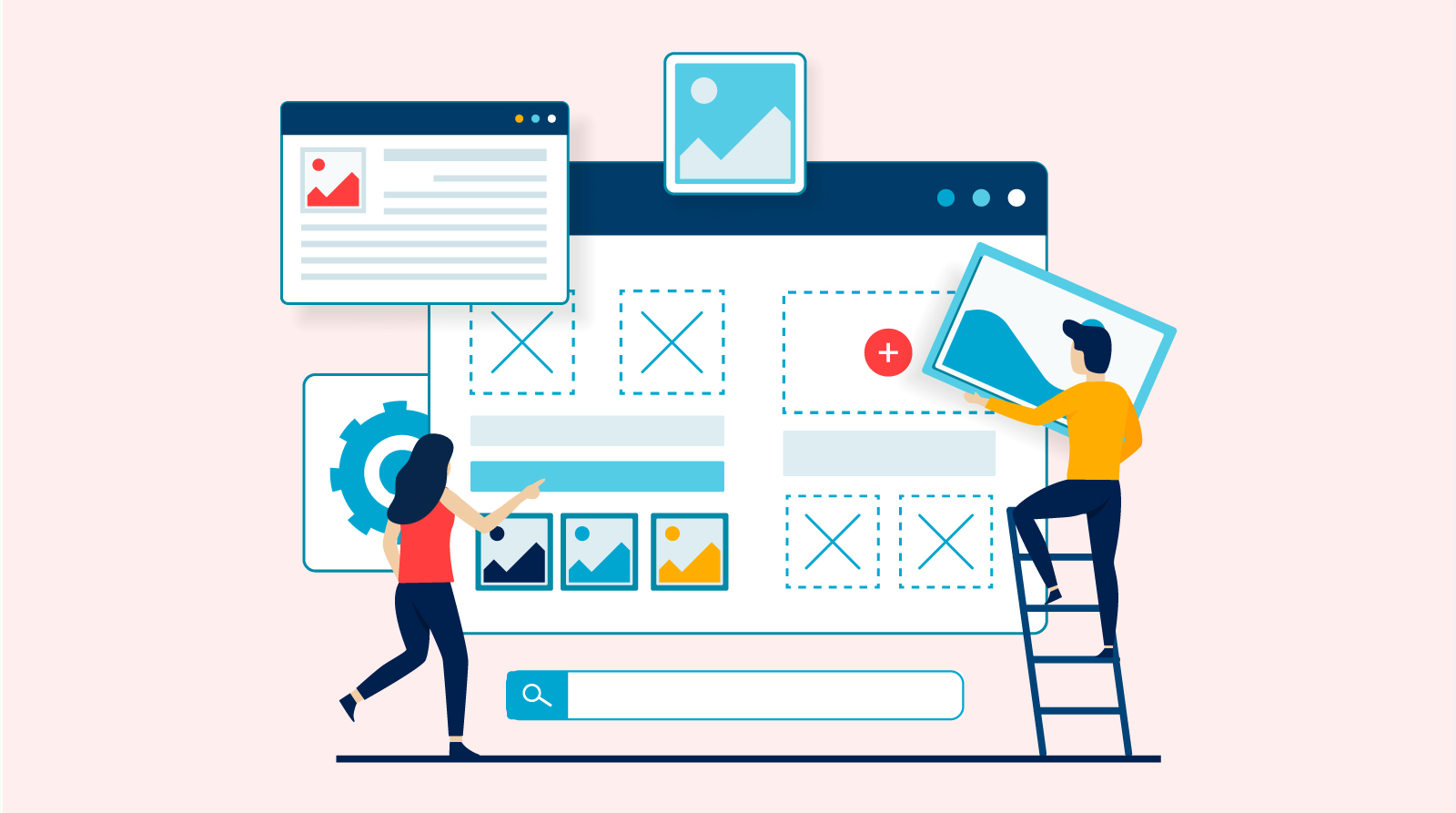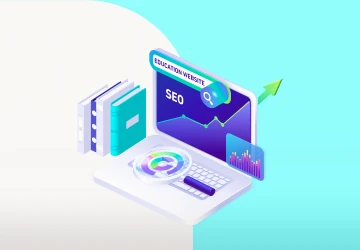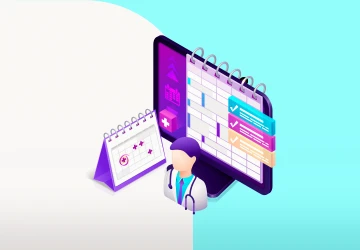Unlock the Power: 9 Key Benefits of Custom Website Templates

Great design doesn’t have to cost a fortune.
Custom website templates make it easy to create a professional, stunning website without spending thousands of dollars or waiting weeks for a developer to finish.
Instead of starting from scratch, you get access to ready-made designs that are polished, flexible, and simple to customize.
And the best part?
You’ll save money—money you can use to boost your marketing, improve SEO, or grow your business even faster.
In this guide, I’ll walk you through the key benefits of custom website templates and show you why they’re a smart, hassle-free way to build a site that looks great and works like a charm.
What Are the Benefits of Custom Templates?
1. Cheaper
Custom website templates are a real money-saver when setting up a website without the hefty price tag of a custom design.
Take a site like Alweb for example.
They have templates ranging from $6 to $18 per month, a steal compared to custom sites that can zap your budget up to $5,000 or more.
Choosing a template means you can better manage your costs and put that saved money into other key areas, such as marketing, SEO, or boosting your social media presence.
It's a smart move, especially if you're tight on funds or just starting out.
The beauty of using templates is that they're a breeze to work with.
You can use tools like drag-and-drop editors that make website building a piece of cake.
This means no forking out cash for web developers or splurging on fancy software.
What's more, these templates come packed with all the essentials you need—navigation menus, contact forms, social media buttons—you name it.
They're plug-and-play, ready to go right out of the box, which means you won't have to spend extra on plugins or get tangled up in custom coding.
2. Fast & Less Time Consuming
Custom website templates aren’t just affordable—they’re also a huge time-saver.
Unlike custom-built websites that can take weeks or even months to create, custom website templates are ready to use almost instantly.
With pre-designed layouts and built-in features, all you need to do is upload your images, add some text, and tweak a few settings to match your brand.
Plus, you can easily find tailored templates that fit your specific needs, letting you skip the long, complicated design process.
Let’s say you’re starting an online store.
Platforms like Alweb.ai offer custom website templates with everything you need, like product listings, shopping carts, and payment options, already included.
Instead of spending hours (or even days) trying to build these features from scratch, you can focus on adding your products and start selling right away.
If you’re building a portfolio, tailored templates designed for creative professionals come with pre-built galleries and interactive elements, saving you time and effort.
3. Easy to Set-Up and Beginner-Friendly
Custom templates are designed to make life easier, even without technical experience.
Developers know people of all skill levels will use these templates, so they build them with user-friendly tools and layouts.
The process is simple, intuitive, and stress-free, allowing you to create a professional-looking website in no time.
Take platforms like Wix and Squarespace as examples.
They offer templates with drag-and-drop functionality, so you can rearrange images, text, and other elements just by clicking and dragging—no coding required.
Let’s say you’re opening a bakery.
With a Wix template, you can easily upload photos of your cakes, customize the colors to match your branding, and adjust the text to fit your style—all within minutes.
Another great feature of custom website templates is their pre-built sections.
Platforms like Shopify provide templates tailored for specific purposes, like online stores.
For instance, if you’re starting a clothing shop, Shopify templates come with pre-designed product galleries, shopping carts, and payment options ready to go.
All you have to do is upload your product photos, set prices, and start selling.
These tailored templates save you the headache of building everything from scratch.
What makes the process even easier is the extra guidance most platforms offer.
For example, WordPress.com provides step-by-step tutorials and helpful videos to walk you through the setup process.
If you’re creating a blog, their templates include pre-designed sections for posts, author bios, and social media sharing buttons, so you can focus on writing great content instead of worrying about the layout.
And if you hit a roadblock?
Platforms like Alweb.ai offer 24/7 customer support via chat or email to help you out.
Meanwhile, Weebly gives you access to forums where you can ask questions and get tips from other users.
4. Different Choices
No matter what business you're in, custom website templates have got you covered with a bunch of styles to perfectly fit your needs.
The best part?
These templates are super adaptable, so you're sure to find something that feels like it was made just for you.
Let’s say you run a hotel.
A good web design agency will show you a variety of custom templates specifically crafted for the hospitality industry.
You’ll tell them about what makes your hotel unique—like who your guests are, what kinds of rooms you offer, the amenities available, and any special services you provide. With all that info, they'll help you pick out templates that not only look great but also organize your information so it’s easy for your guests to find what they need.
For example, if your hotel is known for its luxurious suites and first-class spa services, they might recommend a template that showcases large, enticing photos of your rooms and spa facilities.
This template would probably include space for detailed descriptions of your services and maybe even a prominent booking form right on the homepage.
It could also feature a section for customer reviews to let potential guests read about the great experiences others have had.
And here's where it gets cool—you're not stuck with a generic design.
Custom templates give you the freedom to choose a look that truly reflects your brand, whether you want something sleek and modern or cozy and inviting.
And if something isn’t quite perfect, you can tweak it with template customization until it's exactly what you want.
5. Attractive Designs
Custom website templates are more than just functional; they look amazing, too!
These templates are put together by professional designers who know their craft.
They've got tons of experience and an eye for what looks good, making sure the templates aren't just practical but also have that wow factor.
So, when you pick a template, you know it's already been polished to shine right out of the box.
These designers have been around the block, working on everything from custom projects to these ready-to-use templates.
They pour the same creativity and attention to detail into the templates as they would a full-blown custom design.
That's why the designs you get are not only modern and stylish but super user-friendly. 
6. Improved User Experience
Designers and developers who whip up custom templates focus on the real ways people interact with websites, aiming to make every visit smooth and enjoyable.
Let's start with the layout—it's clean and super organized.
This means visitors don’t have to go on a scavenger hunt to find what they need; everything is right where you’d expect it to be.
For instance, if you're setting up an online store, the template will likely have clearly marked product categories, a straightforward search bar, and a simple checkout process.
This setup helps customers quickly find what they're after and buy it without any fuss.
Speed is another big plus.
No one likes to sit around waiting for a page to load, and slow sites can drive visitors away.
Custom website templates are optimized to load fast, which keeps people browsing your site longer.
And because they're mobile-friendly, your site will look and function great on smartphones and tablets, too.
Navigating these templates is a piece of cake.
The menus and links are intuitive, making it easy for visitors to get around and find exactly what they need with just a few clicks.
Say you’re launching a travel blog—the template might come with sections already set up for "Destinations," "Tips," and "Itineraries," helping your readers get straight to the good stuff.
And don't forget about the built-in features.
Most templates include handy tools like contact forms, call-to-action buttons, and other interactive elements.
For example, if you're running a hotel website, there might be a big, bold "Book Now" button right on the main page, so guests can easily book a stay without any hassle.
7. Consistency Across the Board
I know you might think I'm splitting hairs here, but really, consistency in website design is a huge deal.
It's not just about being picky; it's about making your site work better for everyone who visits.
That's where custom website templates come into play—they keep the look and feel of your entire site uniform, which is super important for looking slick and running smoothly.
Picture this: when folks visit your site, they want a smooth transition from page to page, not a jarring jump between different styles.
Custom website templates are perfect for this because they keep the same layout, color scheme, and typography everywhere.
Take an online store, for example.
A solid custom template makes sure that your product pages, shopping cart, and checkout all look and function in harmony.
This matching look—from the fonts to the buttons and color schemes—doesn’t just make your site pretty; it also stops visitors from being distracted by odd, out-of-place elements.
It all adds up to a smoother shopping experience and builds trust in your brand because everything appears intentional and well-thought-out.
And let’s talk about branding.
Tailored templates let you weave your brand’s style throughout your entire site effortlessly.
You can pop your logo on every page, splash your brand colors across the site, and use your favorite fonts everywhere without having to tweak each detail manually.
Another perk?
Consistent design makes navigating your site a breeze.
Once visitors get the hang of your site’s layout—where the menu is, what the buttons do, and where to find important stuff—they won’t get lost trying to figure things out every time they click on a new page.
This familiarity cuts down on confusion and frustration, making people more likely to stick around longer.
8. Enhanced Collaboration
Custom website templates set everyone up on the same page from the start—designers, developers, and content creators.
Because the structure and design are already figured out, there’s no confusion.
Everyone knows exactly what they're working with, which cuts down on those endless back-and-forth emails and keeps miscommunications to a minimum.
One of the coolest things about these templates is how they help teams work better together.
Since everything comes pre-built, different folks can tackle different tasks at the same time.
For instance, while one person is busy with template customization to get the look just right, someone else can be plugging in content or fine-tuning the back end.
This means you can get things done faster because you’re not waiting around for someone else to finish their part before you can start on yours.
Templates serve as a great roadmap for the whole team, too.
Need to make a tweak to the design or shuffle some content around?
The template points you exactly where you need to go.
It’s like having a map that everyone follows, keeping things organized and removing the guesswork.
This helps ensure that everyone is moving in the same direction, which is crucial when you're trying to juggle different parts of a project.
Plus, custom website templates are a huge help when it comes to making updates or handling maintenance.
Need to change something across several pages?
No sweat.
The structured setup of a template lets you make those changes quickly and uniformly, saving time and preventing errors—something that’s especially handy for bigger teams dealing with more complex websites.
And there’s more good news: many custom website templates are designed to work hand-in-hand with popular collaboration tools that support real-time editing, feedback loops, and version control.
This is a game-changer for teams that aren’t all in the same place.
Everyone can throw in their two cents, see updates as they happen, and push the project forward without any lag time.
9. Integrated Booking Engine
An integrated booking engine is a game-changer for websites that want to turn visitors into paying customers.
This not only creates a better user experience but also increases the chances of direct bookings.
And here's the best part—you get to keep full control of the booking process while boosting profits by skipping third-party platforms that take a cut of your earnings.
When you work with a skilled website design agency, they’ll give you more than just custom website templates.
They’ll also set you up with a booking engine that works seamlessly with your site.
A good agency knows that a booking system isn’t just an “extra feature”—it’s a core part of driving conversions and growing your business.
With their experience, they’ll ensure that the booking engine fits your brand’s style and needs perfectly, so it looks great and works flawlessly.
FAQs
What Are the Benefits of Using a Website Template?
They provide a pre-built layout that reduces design time and costs. Because everything’s already structured, content updates are simpler, improving maintenance.
What Are the Benefits of Using Templates?
They cut down on coding work, helping you build a site without starting from scratch. By ensuring consistent design elements, they create a reliable user experience across pages.
Are Website Templates Good?
They’re good because they streamline design, letting you focus on content rather than layout. As most templates are responsive, users enjoy a smooth experience on any device.
How Do Templates Help With the Development of Websites?
They help with the development of websites as they offer a framework with predefined styles, allowing faster production and easier edits.
Last Words
As promised, we’ve talked about how custom website templates can save you time, money, and effort while still giving you a great-looking, professional site.
Here’s the big takeaway: keep it simple.
Choose a template that fits your goals—whether it’s for a business, portfolio, or online store—and focus on the essentials.
Clear navigation, fast loading speeds, and a mobile-friendly design are what matter.
One last tip: test your site on different devices before you launch. You want it to look great and work smoothly everywhere.
Do you have questions or feeling stuck?
Don’t stress—just dive in, explore templates, and start building step by step.







